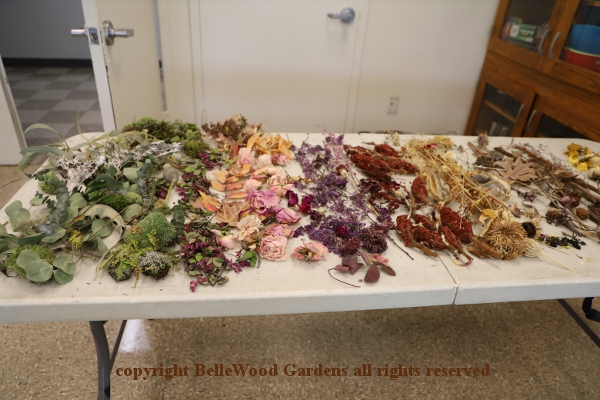
in a color gradient. Tussocks of dry moss, dry roses, heads of staghorn sumac berries, teasel, more.
.
All content included on this site such as text, graphics and images is protected by U.S and international copyright law.
The compilation of all content on this site is the exclusive property of the site copyright holder.
Flatlay Workshop with Mary Jo Hoffman
at the New York Botanical Garden
Wednesday, 15 May 2024
In mid-April I had the pleasure of reviewing Still, the Art of Noticing, by Mary Jo Hoffman. I then learned that in mid-May she would be giving a lecture and presenting a workshop at the New York Botanical Garden. Count me in! The morning lecture was attended, promptly followed by a book signing. Many of the morning attendees were also signed up for the afternoon workshop. Which went like this.
Directly to our left as we enter the classroom is a table with an array of dried materials arranged

in a color gradient. Tussocks of dry moss, dry roses, heads of staghorn sumac berries, teasel, more.

At each student's place is a handful of dry material - loose petals from
different flowers, and two handouts: one is a four page description
of her photo editing process. And an essay from her book which explores the
five stages of Gathering, Arranging, Photographing, Editing, and Sharing.
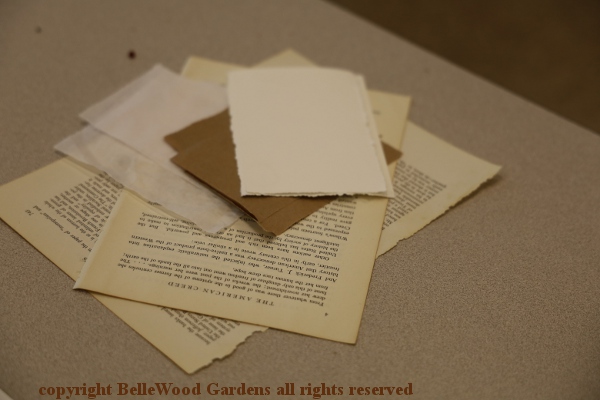
We are also provided with a selection of papers to use as background, one white,
another black, four smaller brown, a couple of book pages with text, and assorted
smaller white squares of different texture and opacity. Options and possibilities.
Before we begin to work (it IS called a workshop, though I would say it is play), the first half of the two hour long class is a lecture. To begin, let's define our terms. Flatlay is an image or a style of photograph in which a number of things are arranged on a surface and then photographed from above, an image shot directly from above – a bird's eye view of an array of carefully arranged objects. There's knolling, which is a specific, more precise style of flatlay. In knolling, objects are arranged so they are parallel or at 90-degree angles. Everything is organised.
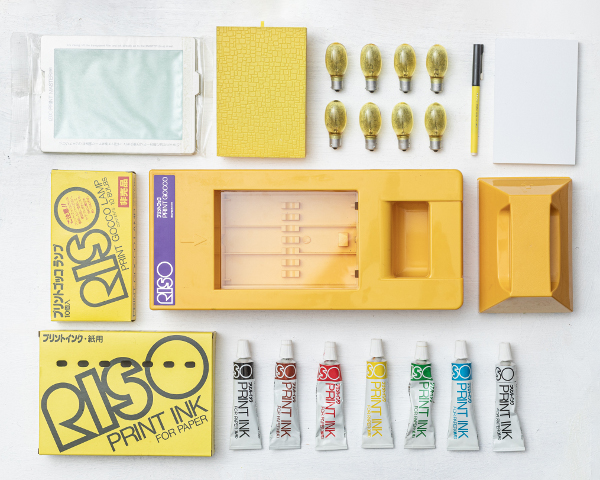
image courtesy Wikimedia Commons
Having arranged objects, whatever your conglomeration might consist of, now comes the photography. Mary Jo places her found objects on her white kitchen floor. A tripod ensures the camera is kept still, there will not be any shake. Are there shadows? A window provides light from front and sides. But then there's the back. Use a piece of white foam core to bounce light around and dispose of those pesky shadows.
There is ample material with which we may work. And we could also bring
material from home if something was particularly interesting. Say no more.
I brought a couple of shed garter snake skins, a skull, and some stones.
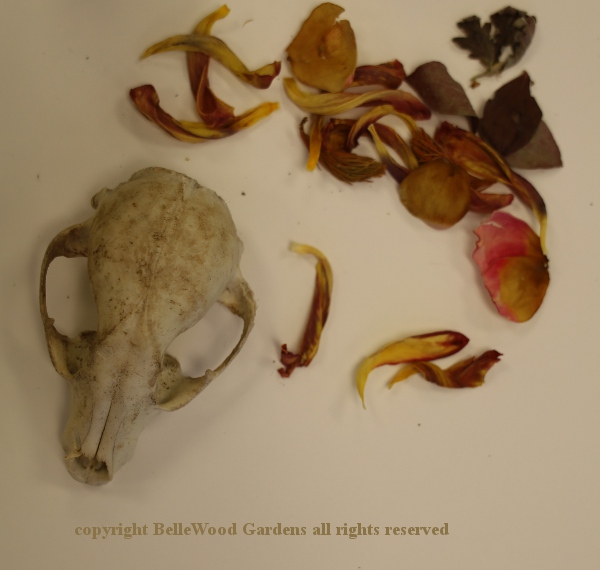
The skull (I thought fox, Mary Jo thinks raccoon) and a handful of loose petals, just dropped.

Then I took a little more effort to arrange things, adding a few sumac berries.
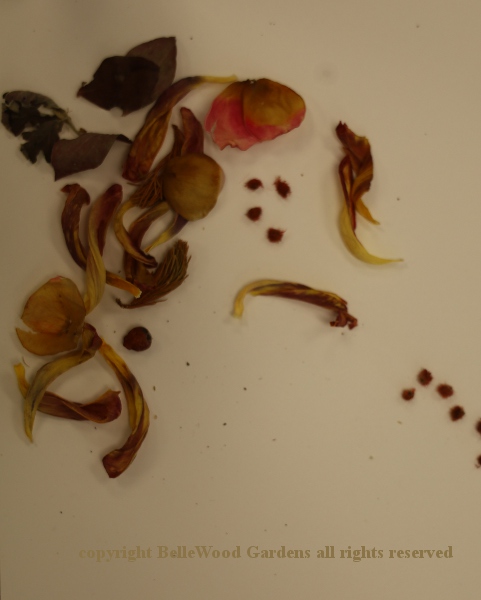
The skull is a necessary part of my flatlay. It looks very dull without it.

One of my rocks has holes. No idea where I found it or how the holes were formed.
I liked the pairing of the holes where eyes were on the skull, paired with the stone.
But I do not especially care for the page of text as a background for these objects.
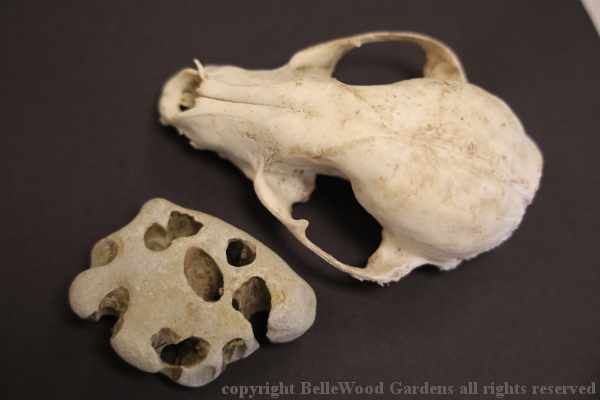
Much better on the black background. The two - dirty white bone and barely gray stone - just pop.

From curiousity I crumpled a tissue paper square, slightly flattened it to see what
might happen. Interesting. But we're running out of time. A different class wants
the room in barely 30 minutes. We would probably stay for another hour. Or longer.
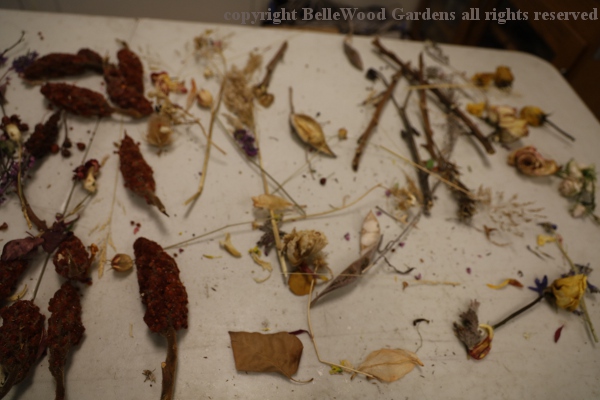
The table of dried material in its careful color gradient now looks rather different.
A good time was had by all. Now to see how many of us continue,
never breaking the chain of daily gathering and noticing.
Back to Top
Back to May
Back to the main Diary Page